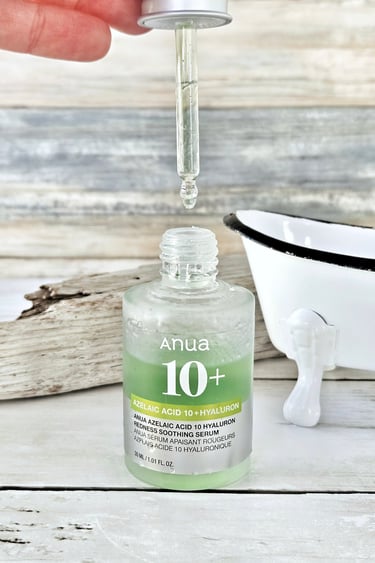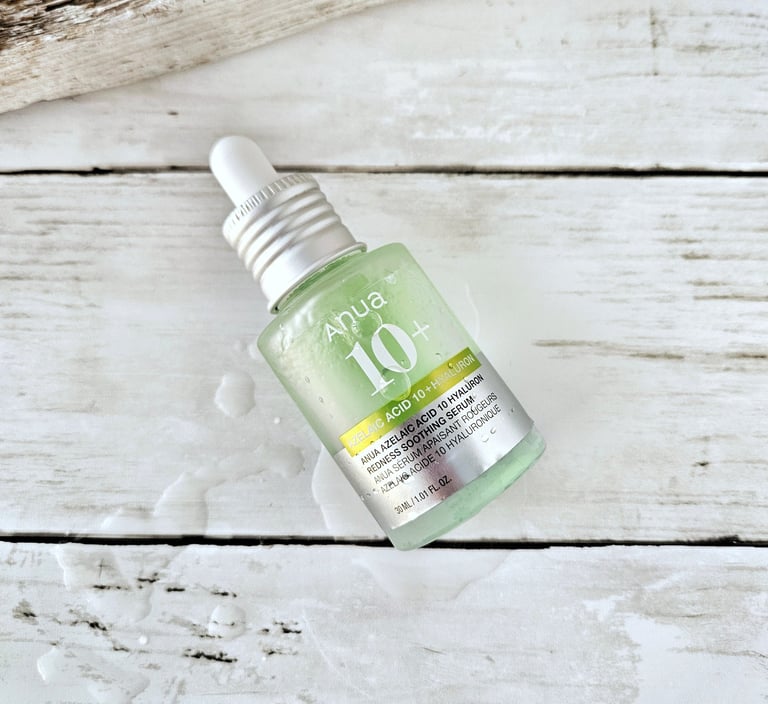Azelaic Acid 101: Your Secret Weapon For Calm, Clear, And Even Skin
Banish breakouts, redness, and rosacea with azaleic acid, and learn how it will transform your skin.
SKINCARE


Disclaimer: Some of the links in this article are affiliate links. I may earn a commission at no extra cost to you if you choose to purchase through them.
Azelaic Acid: Why Your Skin Will Thank You
If you’ve been hunting for that next hero ingredient to level up your skincare routine, azelaic acid might just be it. Don’t worry if you haven’t heard of it yet. This little powerhouse has been quietly making waves in the skincare world, and for good reason.
I’ll break down what it is, why it’s so effective, who it’s good for, and how I personally use it in my routine.
What Is Azelaic Acid?
Azelaic acid is a naturally occurring compound found in grains like wheat, barley, and rye. In skincare, it’s prized for its anti-inflammatory, antibacterial, and skin-brightening properties. Think of it as a multitasking ingredient that can calm irritation, even out skin tone, and gently clear pores without the harshness of some acids like benzoyl peroxide or strong retinoids.
Why Azelaic Acid Is a Must-Have
Here’s what makes azelaic acid such a versatile star in your routine:
Fights Acne – It kills acne-causing bacteria while reducing inflammation, which is perfect for breakouts without over-drying your skin.
Reduces Redness and Rosacea – Studies show that azelaic acid can calm redness and irritation, making it a go-to for rosacea-prone skin.
Brightens Skin and Evens Tone – It helps fade hyperpigmentation, including post-acne marks and sun spots.
Gentle Yet Effective – Unlike stronger acids, it’s typically well-tolerated, even on sensitive skin.
Basically, if your skin could use a little calm, clarity, and glow all at once, azelaic acid is your friend.
Who Should Use Azelaic Acid?
Azelaic acid is suitable for a wide range of skin types and concerns:
Acne-prone skin: Keeps breakouts under control without harsh irritation.
Sensitive or rosacea-prone skin: Reduces redness and inflammation.
Hyperpigmentation: Helps fade dark spots and even out your complexion.
Combination or oily skin: Lightweight and non-comedogenic.
Unlike some other acids, azelaic acid is mild enough to be layered with other actives in your routine, making it incredibly versatile.
How to Use It in Your Routine
Cleanse first: Always start with clean skin. I follow cleansing with skin flooding before applying my actives.
Apply a thin layer of azelaic acid: Concentrations typically range from 10–20%.
Moisturize afterward: A lightweight moisturizer helps seal in hydration.
Use sunscreen during the day: Azelaic acid can make your skin more sensitive to sun damage, just like other acids.
For my routine, I’ve been loving the Anua Azelaic Acid 10+ Hyaluron. The texture is lightweight, absorbs quickly, and isn't sticky. It’s hydrating thanks to hyaluronic acid, and my skin feels calmer, smoother, and less congested since I started using it.
What to Expect
When you first start azelaic acid, your skin might feel a little tingly or dry. That’s normal, but it should subside quickly. With consistent use (think 6–8 weeks), most people notice:
Fewer breakouts
Reduced redness
Smoother skin texture
Brighter, more even complexion
Bonus Tips for Maximum Effect
Start slow: Apply every other day if your skin is sensitive.
Keep your routine simple at first. Azelaic acid works best when your skin isn’t overloaded with too many actives.
My Takeaway
Azelaic acid isn’t flashy, but it’s quietly powerful. It tackles multiple skin concerns without irritation, making it a must-have for anyone looking for calm, clear, and radiant skin.
As an Amazon Associate, I earn from qualifying purchases.




